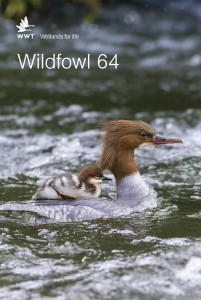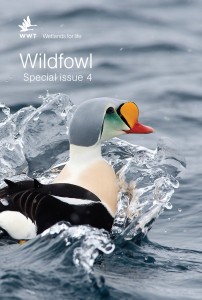A new species and new information to help ducks, geese and swans

 The latest scientific research that will help conserve waterbirds and their wetland habitats has been published by the Wildfowl & Wetlands Trust (WWT) in a special two-part edition of its peer-reviewed, scientific journal: Wildfowl.
The latest scientific research that will help conserve waterbirds and their wetland habitats has been published by the Wildfowl & Wetlands Trust (WWT) in a special two-part edition of its peer-reviewed, scientific journal: Wildfowl.
A new species – the extinct Chatham Island merganser Mergus milleneri – is described for the first time ever in the opening paper of the main journal. Humanity’s long association with waterbirds makes it a rare occurrence that a new species, even one that is no longer with us, is recorded for science.
The breeding biology of the eastern population of Bewick’s swans is described in a paper which could offer clues to help the declining North-west European population of the species. It is one of several papers presented at the International Swan Symposium in Maryland earlier this year that are published as a ‘mini proceedings’ in Wildfowl.
The second, special edition of Wildfowl brings together the proceedings of the world’s biggest waterbird symposium: the North American Duck Symposium (NADS). This year has expanded to include waterbirds from across the northern hemisphere, making this special issue the most current and comprehensive scientific publication on duck, goose and swan conservation across the Holarctic.
 Dr Eileen Rees, WWT’s head of UK Waterbird Conservation and Editor of Wildfowl said:
Dr Eileen Rees, WWT’s head of UK Waterbird Conservation and Editor of Wildfowl said:
“Scientific research is the backbone of conservation. As editors, we’re incredibly fortunate that the many high quality papers presented by internationally renowned researchers at the NADS have been taken forward for publication in Wildfowl.
“This is only the fourth time in Wildfowl’s sixty plus years that we’ve published a special issue, and I’m sure that this particular volume will prove to be a seminal work and major source of reference for years to come.
“Much credit is due to Prof Rick Kaminski of the Mississippi State University for enabling this work to come to fruition. It is surely good news for the incredible birds that are the subjects of these studies and the focus of our conservation, as well as the wetland habitats in which they live.”
Wildfowl is an international scientific journal, published annually by the Wildfowl & Wetlands Trust (WWT).
The journal appeared originally as the Annual Report of The Severn Wildfowl Trust at the end of the Trust's first working year in 1947. From the outset it presented the results of scientific research in order to improve knowledge and understanding of wildfowl populations.
It now disseminates original material on the ecology, biology and conservation of wildfowl (Anseriformes) and ecologically-associated birds (such as waders, rails and flamingos), and on their wetland habitats.
Research and review articles related to policy development and application are welcome. Material on habitat management is also sought, particularly where this is directed to the conservation of wildfowl and other wetland birds.
Research and review articles related to policy development and application are welcome. Material on habitat management is also sought, particularly where this is directed to the conservation of wildfowl and other wetland birds.
Current issues are available online here, and the full Wildfowl back-catalogue is accessible at http://wildfowl.wwt.org.uk